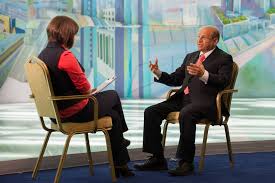A quick guide to cooperation between the General Counsel’s Office and the PR Department
In times of litigation, many lawyers live in fear that the legal strategy will be sunk as a result of something that is said in the media. This is what often leads to those corporate quotes that read, “we don’t comment on pending litigation.” This is no better than “no comment” which is like saying “I’m guilty.” Company lawyers and executives consider the “no comment” option the safe option. Perhaps, but what message does it send to your company’s key stakeholders? A company that doesn’t defend itself in the media could quickly lose support of customers, suppliers and partners. The “no comment” strategy may also be an indication that there is no trust between the General Counsel’s office and the PR department to craft effective messages or strategy. A smart PR team will build relationships with the GC’s office long before the company is embroiled in major litigation. Likewise, chief executives should demand that the two departments are working together. (If the C suite doesn’t trust the PR department then its time to get communications people they trust to work closely with the legal team.)
Use communications to help protect the brand in ugly lawsuits
A company can win big in court but lose big time in the court of public opinion, which ultimately could be as – or more – damaging to the company’s brand as losing in court in the first place. The PR team should work in lock step with the legal team from the beginning of major litigation. The goal should not necessarily be to publicize the case but to protect the brand in the event the case gets serious media attention or public scrutiny. The communications strategy should reflect confidence, positive messaging and the ability to rapidly respond to false allegations and media attacks. To get company officials to understand the potential threat to the brand it is often a good idea to send around a Q&A document exploring the likely and unlikely questions the company could face. The internal process of achieving agreement on the answers can be excruciating but maybe the most important exercise to get everyone on the same page. The Q&A process gets executives and lawyers to think through the possible scenarios, in fact, often it’s the first time they even considered such questions (an effective Q&A is no more than 20 question but 10 will usually work fine). Once a Q&A is agreed upon, core messages and contingency statements can be drafted.
Read all filings, ask questions, and derive messaging from filings
A good communications director will read all filings to fully understand the twists and turns to the case. The filings contain the heart of the case and each side’s argument and are fertile ground for messaging and Q&A. PR pros should be sure to understand what is being said in the documents; if they don’t, then they need to have the lawyers explain it to them. A seasoned litigation communications pro can actually influence the drafting of filings to maximize the message and media use. At a minimum, one can help insert strong language making it a bit more media friendly. It’s also important to remember that media have access to court records through PACER (or the opposition) and often read filings in full. This underscores the need for the PR team to fully understand the filings as well as the potential to influence the media’s coverage of it.
Recognize key audiences
It is not unusual for the legal team to have “tunnel vision” when it comes to audiences – understandably, they often only see the judge or jury. It is the responsibility of the PR team to see the broader picture and how all the audiences are affected and make recommendations accordingly. If, for example, the company is taking on heavy criticism about its core values or products related to litigation and its only comment is “we don’t comment on pending litigation” someone needs to assess the reaction by customers, partners and other key stakeholders. A non-response position can erode trust, confidence and raise questions by those key constituencies; meanwhile, an upbeat and positive response can protect the brand without threatening the case.
Control the message as much as possible
Protecting the brand in the midst of litigation is a delicate balance. Message discipline is critical. If your spokesperson shoots from the hip then keep him or her far away from the media. In an interview situation, the more control you can gain the better. Email is the preferred option for responding to media questions. The answers can be precisely crafted, vetted by legal, and presented in writing, which should eliminate the possibility of being mis-quoted. A social media plan needs to be in place to monitor, assess what is being said and how it affects the company or litigation. Likewise, an online response plan, approved by legal, should be implemented. The plan should seek broad, forward-looking responses and avoid “tit for tat” spats. Another important tool is the use of third party support for the company in the form of op-eds or blogs (which can be repurposed on additional online other platforms). Op-eds and blogs provide the complete message control while demonstrating “independent” support for the company.
Be prepared to explain – or have counsel explain – legal nuances, precedent, and/or next steps
If “beat” media covers your company then it is likely they are not accustomed to reporting on the legal process. This can be a threat or an opportunity. The threat of course is the potential for inaccurate or confounded coverage of the case due to a lack of understanding. However, media without legal experience are potentially malleable if the case can be explained in plain language. A well-versed lawyer can be a great asset here explaining the legal nuance, procedure and next steps. Even better, it doesn’t need to be on the record. Educating a media savvy lawyer as to the terms – and proper use of – “background” “deep background” and “guidance” can go a long way. It’s also good to foster a relationship between the lawyer and key media as it makes for much better coverage. However, the smart lawyer will understand the need to keep PR in the middle and direct calls and interview requests through PR for vetting even among known media.
###










